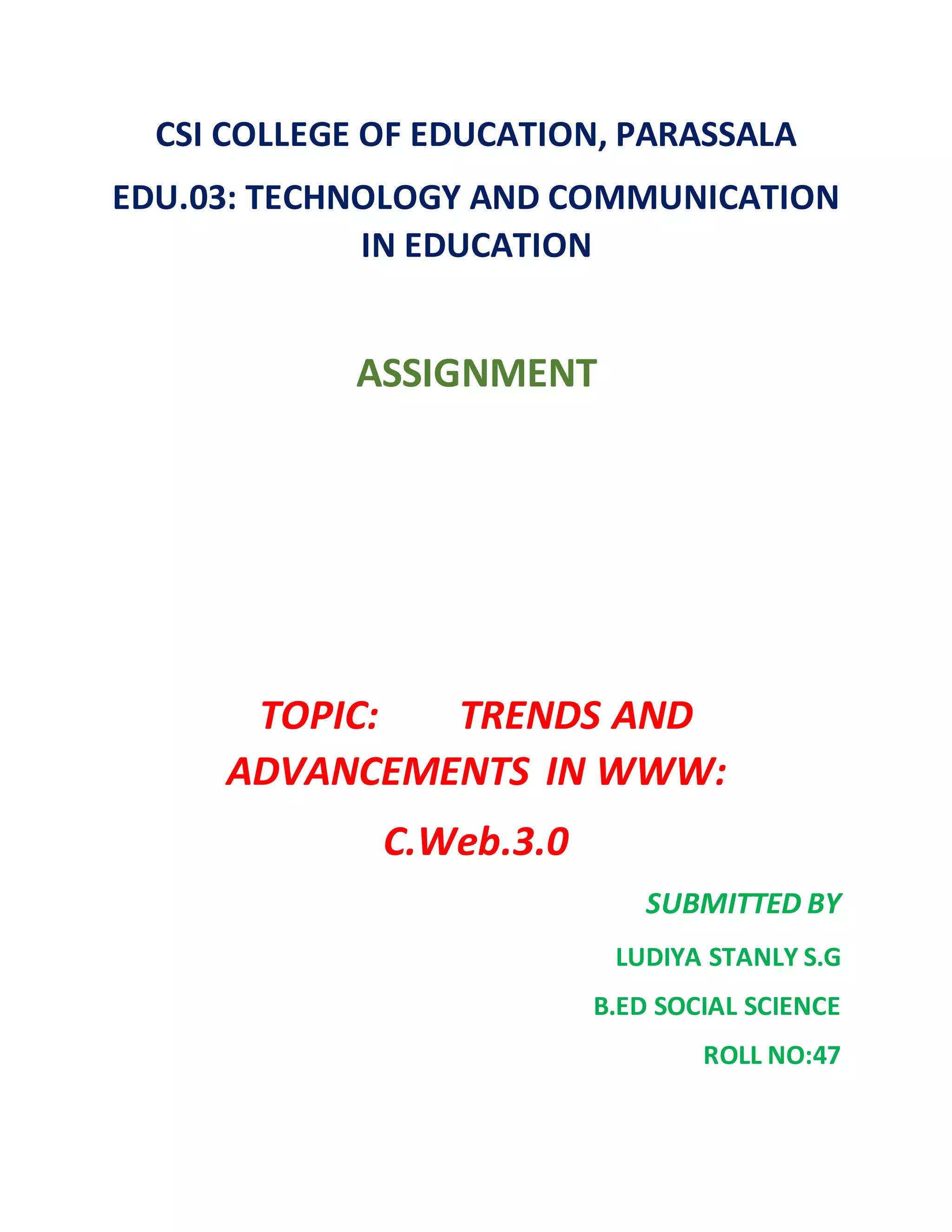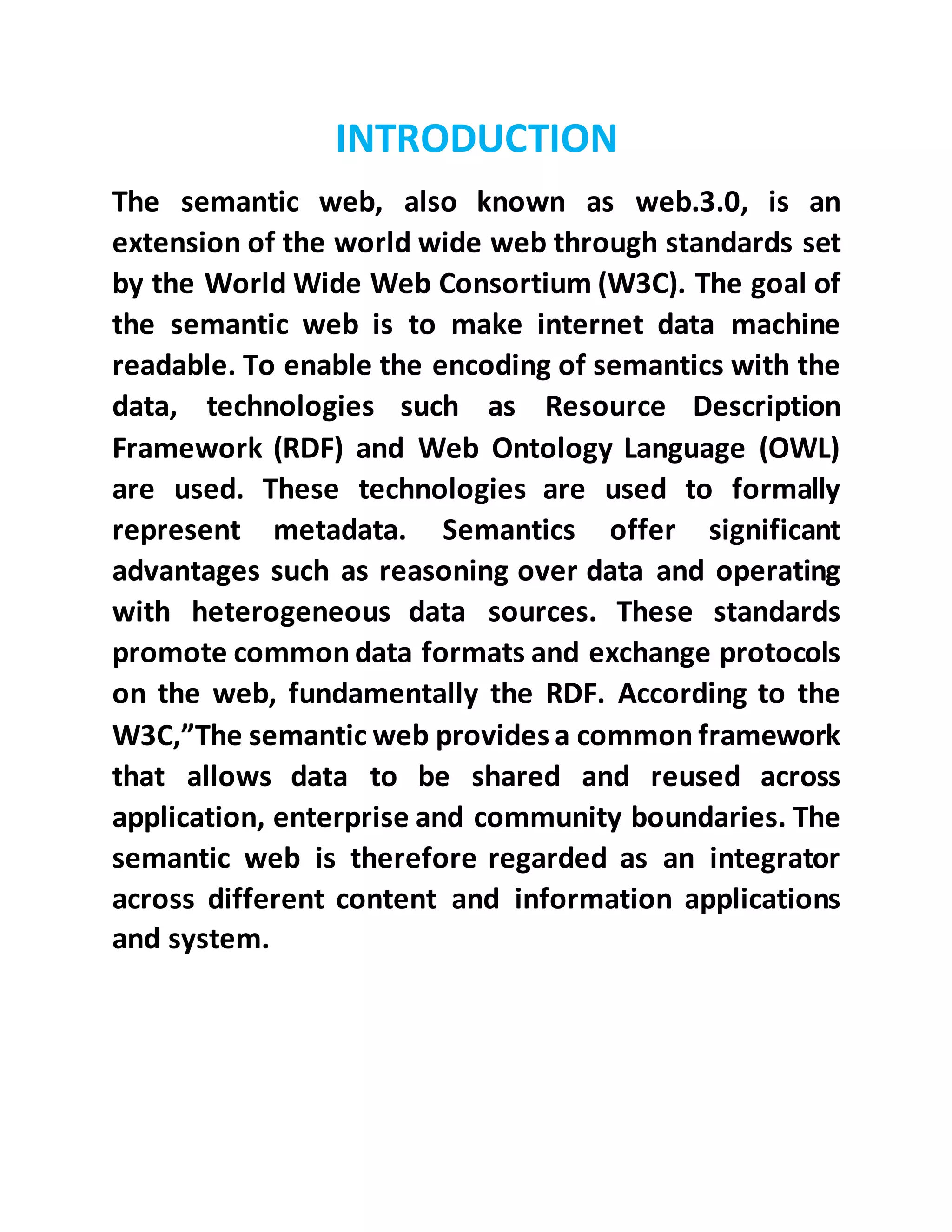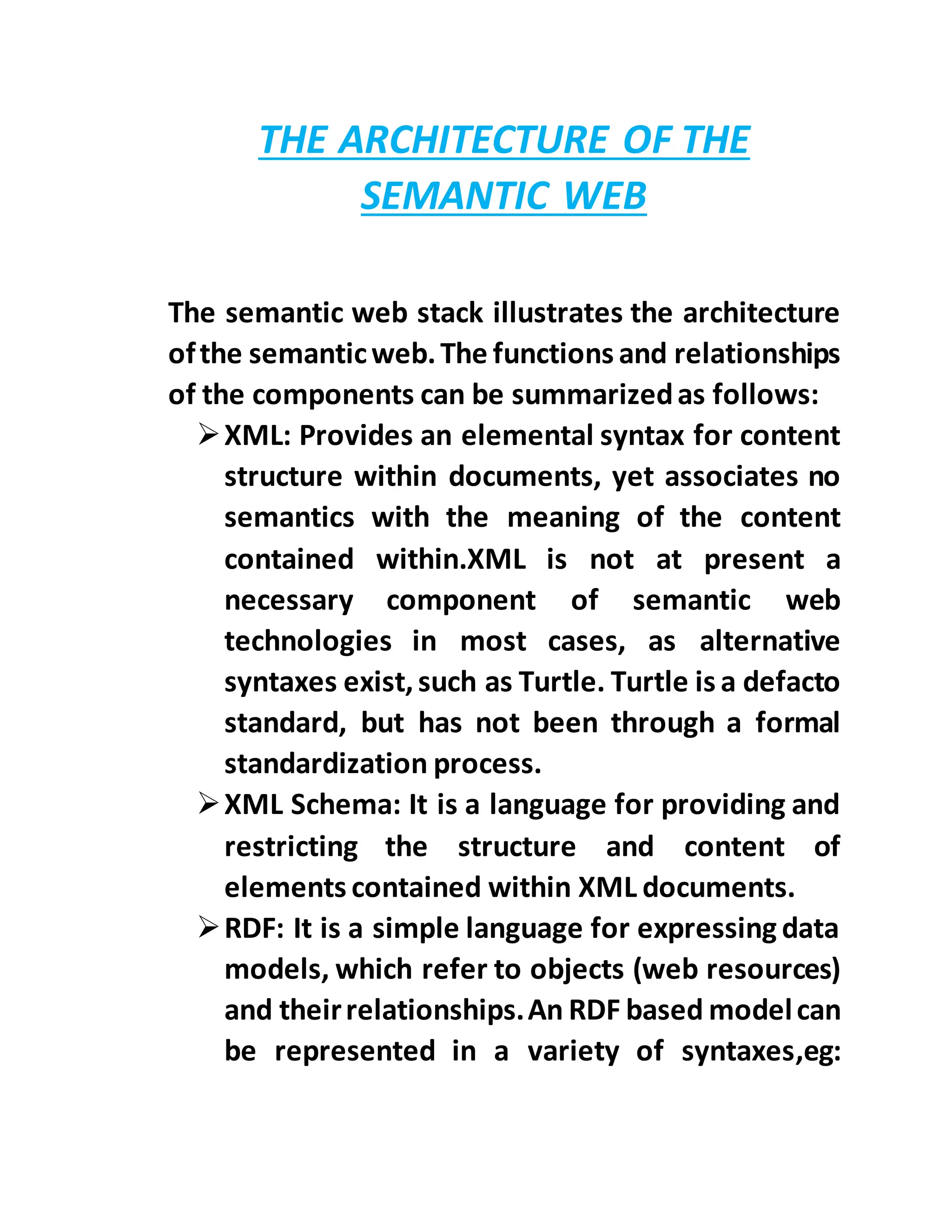The document discusses the trends and advancements of Web 3.0, also known as the Semantic Web. Web 3.0 aims to make internet data machine-readable through standards that encode semantics and metadata. This allows data to be shared and reused across applications through common data formats and exchange protocols. Key technologies that enable the Semantic Web include Resource Description Framework, Web Ontology Language, and SPARQL query language. Challenges to the Semantic Web include dealing with the vastness of data, vagueness, uncertainty, inconsistency, and potential for deceit.











